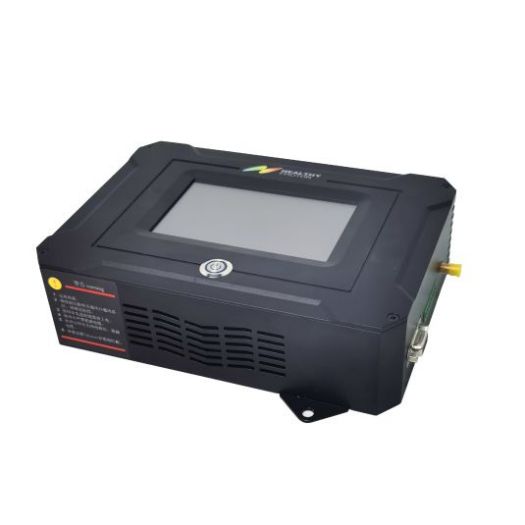 Home - TDLAS modules - Applications - Application Case :Ppb-level mid-IR quartz-enhanced photoacoustic sensor for DMMP detection using a T-shaped tuning fork.
Home - TDLAS modules - Applications - Application Case :Ppb-level mid-IR quartz-enhanced photoacoustic sensor for DMMP detection using a T-shaped tuning fork.
Recently, the joint research team from State Key Laboratory of Quantum Optics and Quantum Optics Devices, Institute of Laser Spectroscopy, Shanxi University, Collaborative Innovation Center of Extreme Optics, PolySense Lab-Dipartimento Interateneo di Fisica, University and Politecnico of Bari published an academic papers Ppb-level mid-IR quartz-enhanced photoacoustic sensor for DMMP detection using a T-shaped tuning fork.
Dimethyl methylphosphonate (DMMP) is widely regarded as the most representative simulant and has been developed and extensively utilized in various gas analysis techniques for DMMP detection.
Gas chromatography (GC) and mass spectrometry (MS) analysis can identify the different organophosphorus compounds with high sensitivity, but they have several disadvantages for in situ monitoring, including being expensive and time-consuming. Moreover, the chromatographic analysis must be performed in a specialized laboratory by skilled personnel and is not suitable for miniaturization. Compared with the above techniques, photoacoustic spectroscopy (PAS) is one of the most promising techniques for sarin gas level monitoring in public places due to its benefits of high sensitivity, selectivity, and fast response. The quartz-enhanced photoacoustic spectroscopy (QEPAS) technique as a variant of PAS has rapidly developed since it was first reported in 2002, in which an ultra-narrowband quartz tuning fork (QTF) acoustically couples with two acoustic micro-resonators (AmRs) acting as a sharply resonant acoustic transducer to detect sound signals instead of conventional broadband microphones. Compared with the sizes of the conventional photoacoustic cell, which is more than 10 cm3, the small volume of QTF is more conducive to the miniaturization and rapid response of sarin or DMMP detection equipment. Besides, the remarkable feature of the QEPAS technique is the excitation wavelength independence, meaning that trace gases with different characteristic absorption spectra can be measured using the same spectrophone. Sarin and DMMP show strong optical absorption features in the mid-infrared region of 9–11.5 µm, so high detection sensitivity can be theoretically achieved using high-performance mid-infrared quantum cascade lasers (QCLs). However, the mid-infrared QCL output beam usually has a large divergence angle, which makes it a great challenge to couple a mid-infrared laser beam through a 300-μm prong-spacing QTF since any stray light hitting the QTF can cause a large background signal.
In this work, we demonstrate a miniaturized and integrated QEPASbased DMMP sensor, in which a custom T-shaped QTF and a midinfrared quantum cascade laser (QCL) are used. The T-shaped QTF has a prong spacing of 0.8 mm and a high-quality factor of ~ 15,000, avoiding the background signal caused by stray light, thus obtaining an optimal detection limit at the ppb level. The DMMP sensor was tested using real outdoor air mixed with DMMP to verify its effectiveness.
Experimental section: Selection of detection wavelength and optical excitation source
A strong targeted absorption band is vital for DMMP detection because the practical application necessitates sensing devices with subparts-per-million sensitivities. Considering the excitation wavelength and size of the laser source, a QCL laser (HealthyPhoton Technology, QC-Qube 200831- AC712) with an emission wavelength of 9.5 µm and a linewidth of 2 MHz was employed as the excitation source of the DMMP-QEPAS sensor, which has an output power stability of < 2 %. The QCL laser driving circuit (HealthyPhoton Technology, QC750-Touch™) with extremely low current noise and temperature drift operated at room temperature for stabilizing the emitting wavelength. The temperature of the QCL was set to 25.5 ℃ by means of the laser driving circuit. As shown in Fig. 2, the output wavelength of the QCL laser used is a function of the driving current and its wavelength tuning range fall in the selected absorption band (the green box area in Fig. 1). The linear relationship between the average power of the QCL laser and the driving current was plotted in Fig. 2, demonstrating good linearity. Moreover, the small size is a noticeable feature of this laser source, which has an outside dimension of ~ 300 cm3 (65 × 65 × 70 mm3), allowing the laser source to realize compact gas sensors.

Fig. 1. Absorption spectra of 1-ppm DMMP/N2 gas mixture (red) obtained by the FTIR spectrometer and absorption spectra of 300-ppm H2O (blue) and 5- ppm CO2 (orange) based on HITRAN database. Inset: DMMP absorption band in the range of 1040–1065 cm− 1 and wavelength tuning range of the used QCL laser.

Fig. 2. QCL emission wavelength and output optical power as a function of driving current in amplitude modulation operating mode with a duty cycle of 50 %.


QCL laser: HealthyPhoton, QC-Qube QCL laser driving circuit:: Healthy Photon, QC750-Touch™
Conclusions
The QEPAS-based sensor has high versatility due to its wavelength independence, which makes it possible to detect various nerve agents by replacing the laser sources. In this work, a ppb-level QEPAS-based DMMP sensor was developed with a compact size and reliable performance for the first time. An excitation wavelength of 9.56 µm was chosen for the strongest DMMP band which is interference-free from H2O and CO2. The main system parameters, including the laser excitation power, the gas pressure, and the modulation frequency, were optimized. Finally, the sensor linearity was verified in the range of 0 − 1.5 ppm and a minimum detection limit of 6 ppb at an integration time of 300 ms was achieved. We detected 500 ppb DMMP with real outdoor air as the carrier gas and obtained the same signal amplitude as
that with zero air as the carrier gas, which verified the high selectivity of the sensor.
References
Ppb-level mid-IR quartz-enhanced photoacoustic sensor for sarin simulant detection using a T-shaped tuning fork, Sensors & Actuators: B. Chemical 390 (2023) 133937, https://doi.org/10.1016/j.snb.2023.133937
 Tel:+86-156-1892-2826 Email:info@healthyphoton.com
Add:Room 305, Building 1, Zhongchuang Science Park, Jinyuan Road, Panhuo Street, Yinzhou District, Ningbo City,China
Tel:+86-156-1892-2826 Email:info@healthyphoton.com
Add:Room 305, Building 1, Zhongchuang Science Park, Jinyuan Road, Panhuo Street, Yinzhou District, Ningbo City,China


